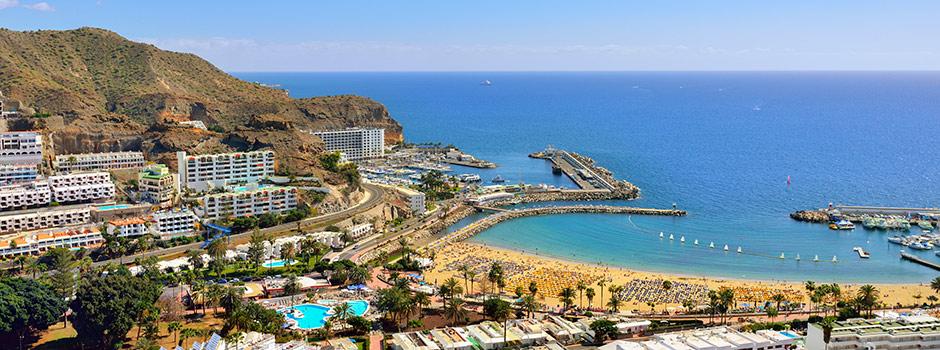Puerto Rico – Fourth Quarter 2017 Review
The Commonwealth of Puerto Rico entered the fourth quarter having suffered one of the most devastating natural disasters in the island’s history. Hurricane Maria left billions of dollars in damage in its wake, including both infrastructure damage and economic losses. The human costs have been equally terrible, with millions of US citizens suffering.
Three months later and the lights are still out – only 70% of power has been restored. Many businesses remain closed due to the lack of electricity and the high costs of using diesel generators. An estimated 20%-30% of the island’s 65,000 businesses may close permanently. Residents have fled to the mainland in the wake of the hurricanes. According to a study by the Center for Puerto Rican Studies at Hunter College in New York, the island’s population is expected to decrease by 14% to 2.9 million people by 2019, as residents flee the devastation. Whether they return remains questionable. The deeper the roots they establish on the mainland, the less likely they are to return home. Hurricane Maria has magnified an already exceedingly complex situation. Rebuilding will take months, a full recovery, years.

Fortunately, bipartisan support for the Commonwealth remains strong. Many millions of dollars have already been spent on recovery and rebuilding and they are set to receive a share of the multi- billion dollar disaster aid package currently making its way through the Senate. How much the island ultimately receives remains to be seen; but whatever the amount turns out to be, it should help with their long-term financial health. The influx of federal dollars is indeed a benefit to bond insurers, even in light of the rhetoric that creditors should not benefit from the destruction, as previously dilapidated infrastructure is rebuilt to a more resilient form.
The island’s electric grid will be modernized and resistant to future hurricanes according to FEMA officials. That’s welcome news: Maria will not be the last to strike. Our hope is that they will use this ‘Hurricane Andrew moment’ to look closely at how they build on the island.
On the legal front, court proceedings are again underway following a delay due to the storms. The Commonwealth, COFINA, Employees Retirement System (ERS), Highway Authority (HTA), and Electric Authority (PREPA) are currently restructuring their debt under Title III of the Puerto Rico Oversight, Management and Economic Stability Act (PROMESA). The Aqueduct and Sewer Authority (PRASA) may also eventually follow this path due to damages sustained during Hurricane Maria. The restructuring of the Government Development Bank for Puerto Rico remains the only Title VI restructuring currently underway.
We await the Commonwealth’s new five-year fiscal plan, which will incorporate storm related damages and economic losses. The fiscal plan will likely contain no debt service payments for the five-year term. How the fiscal plan accounts for federal dollars and treats creditors remains to be seen. Additional court decisions expected in 2018 should give welcome clarity and a clear direction to the Title III cases highlighted above.
If Hurricane Maria was a left hook, then the Tax Cuts and Jobs Act may be the overhand right that knocks the island to its knees. Congress is set to end one of the Commonwealth’s few competitive advantages that helped to make it a medical manufacturing hub at a time when billions in taxpayer dollars are expected to be spent on recovery and rebuilding. The legislation includes a tax on intangible property of controlled foreign corporations (CFC), including those operating on the island. This tax would essentially treat Puerto Rico and other US territories as foreign countries.
Congress’s well intended attempt to protect American jobs with this new tax may have the unintended consequence of doing the exact opposite in Puerto Rico, where roughly 235,000 US citizens are employed in the manufacturing sector. This would not be the first time the island’s future has been directly impacted by the United States government. It was the phase-out of section 936, signed by then-president Bill Clinton, as well as their own inability to adapt, that marked the beginning of the end. The problems they face require long-term reforms that spur economic growth. We hope that future legislation addresses those needs.
Uninsured debt traded lower in price in response to the hurricanes, driven by the expectation of a reduction in economic activity and the possibility for lower recoveries. Insured debt has been driven to higher yields because of uncertainty and tax-loss selling pressure. With the entire picture in view, we think that carefully selected insured debt can still offer an attractive opportunity. As such, we remain buyers. Cumberland Advisors’ Puerto Rico Insured strategy does not include uninsured debt from any island authority but focuses instead on the headline-driven opportunity in carefully selected insured debt.
Disclaimer: The preceding was provided by Cumberland Advisors, Home Office: One Sarasota Tower, 2 N. Tamiami Trail, Suite 303, Sarasota, FL 34236; New Jersey Office: 614 Landis Ave, Vineland, NJ ...
more



Our evil government is treating US citizens in Puerto Rico as if they were foreigners by treating the businesses as foreign entities..
Has it always been like that? Or is that a result of our president's personal beliefs affecting US policy?
I believe the president has the power to change it. But I am not an attorney Cynthia.